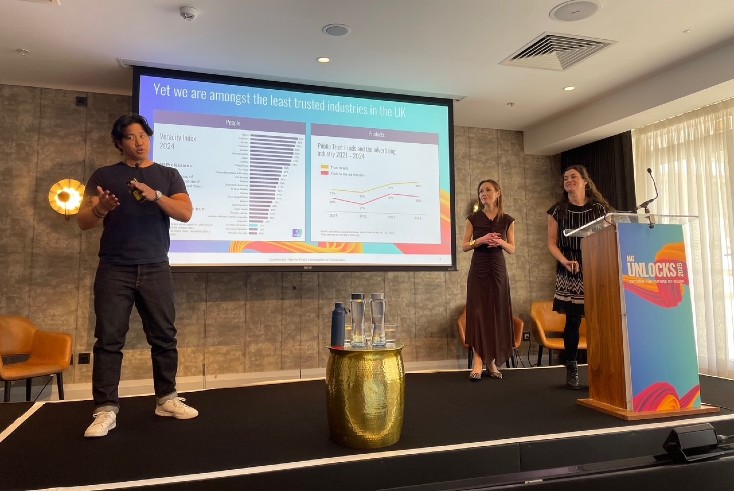Why communities are key to authenticity

The average Brit is part of 3.2 communities and brands should consider community-based targeting to reach them with advertising that appeals to their sense of identity beyond simple demographics.
That is according to new research from MG OMD in partnership with the UK’s largest publisher, Reach. It found that 65% of the UK population is in at least one form of community.
The Belonging in Britain report, revealed on Wednesday at MG OMD’s Unlocks event at County Hall in London, made the case that communities should play an “important element” within marketing and communications strategies rather than “as an afterthought or not a thought”.
“Most people in modern Britain belong to communities and they reflect and resonate with their complex identities,” the report noted. “They’re often places of high attention, engagement and trust, and are influential over minds and behaviours.”
The research, which was previewed by MG OMD CEO Natalie Bell in a Media Leader Podcast in February, identified five types of intersecting macro-level communities that advertisers can use to consider for targeting: shared interests or activities, shared characteristics, shared beliefs, shared locations and shared experiences.
According to Samantha Redmond, MG OMD’s behavioural insight business director, belief-based communities are “potent” and “particularly influential” at shaping people’s minds, while characteristic-based communities are most influential over changing people’s behaviours.
However, each community type has its own potential strengths for brands to leverage, with all communities being “tightly connected to culture”.
The most popular form of community is shared interests or activity groups. According to the study, 82% of people in communities are in at least one such group.
These communities are important to one’s sense of personhood, with three-quarters of survey respondents saying their community is “important” to their identity and one-third saying it is “essential”.
‘Trust is at a premium’
Accordingly, trust is high within communities, with 96% of participants saying they trust the opinion and advice of people in their communities. And as MG OMD head of insight Adrian Wong explained at Unlocks, “trust is at a premium” in a world increasingly marked by misinformation, meaning communities can provide rare trusted environments in which to interact with consumers.
Perhaps most notable for marketers, just 14% of respondents who identified with at least one community said they are not willing to engage with brands or organisations, implying an openness to engaging with brands in those spaces.
Are communities the future of audience-targeting? With MG OMD’s Natalie Bell
But, as Wong warned, brands need to do more than simply advertise in community-based spaces. “We can’t just show up,” he explained. “We need to be helpful in those communities we show up in.”
According to the report, those willing to engage with brands are seeking “expertise, knowledge, a listening ear or supportive voices”, rather than free products or funding.
“By engaging authentically and offering value — whether through expertise, advocacy or support — brands can foster loyalty and influence behaviours,” the study argued. “This is a chance to move beyond transactional interactions and create meaningful, long-term relationships.”
Operationalising community-based targeting
Sophia Durrani, MG OMD’s head of strategic planning, told The Media Leader that community-based targeting “starts with respecting the nuances of different communities and the people within them”.
“We shouldn’t assume what communities people are a part of,” she added.
Durrani argued that, while many brands do already look to target communities (such as, for example, mums), “they aren’t leveraging them” effectively to build trust and greater consideration.
MG OMD hopes to rectify this by embedding findings from Belonging in Britain into the agency’s planning processes, combining a community-centric targeting philosophy with industry datasets to inform campaign activations.
“It’s not about a one-size-fits-all approach, but tailoring strategies to reflect the unique characteristics of each group,” she explained. “To operationalise effectively, brands need to align their objectives with audience insights, the wider context and the dynamics of the communities they’re engaging with.
“By moving beyond outdated demographic-based audience segmentation, we’re driving a more inclusive, nuanced and effective approach to media planning and buying.”




